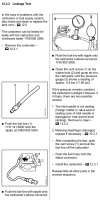MattG
Chainosaurus Rex
- Local time
- 7:23 PM
- User ID
- 3111
- Joined
- Apr 30, 2017
- Messages
- 896
- Reaction score
- 1,432
- Location
- Cambridgeshire, England
Can you explain the POP test a bit to me? It's not something I'm familiar with. I'm only familiar with the regular pressure leakage test for carburettors, e.g. like this :It should be above 20 psi.
I've used nail polish or super glue to reseal Welch plugs.

Sorry to derail your thread @Timbco84 but I'd like it if someone gave a brief explanation of the POP test






